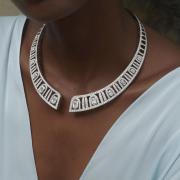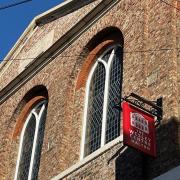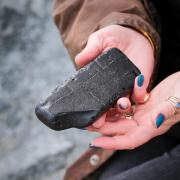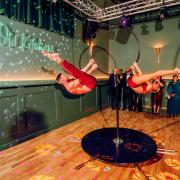If anyone ever asks me my favourite book I answer without hesitation… Wuthering Heights. It is both violent and dark, and certainly not a love story no matter how Sir Lawrence Oliver portrayed it in the first of many screen adaptations.
Instead Wuthering Heights is a story of jealousy and obsession, of anger and of prejudice shown towards the young boy found wandering the docks of Liverpool and brought home to live with the Earnshaw family high on the Pennines in Yorkshire. Who Heathcliff is and where he comes from remain a mystery in Emily Brontë’s one and only novel, as does his ethnicity even though he bemoans the fact that had he been born with “fair hair and fair skin “ he could have risen above the cruelty shown towards him after his protector Mr Earnshaw dies.

But prejudice of birth was certainly at the heart of the story and why wouldn’t it be? Anti-slave campaigner and Yorkshire MP, William Wilberforce was Patrick Brontë’s sponsor at Cambridge. And we know Patrick shared many of the issues of the day with his three young girls, issues which were placed at the very heart of the books they wrote. Gender inequality, poverty, lack of self esteem and opportunity were the very foundations of the seven novels the sisters produced in secret. And may I suggest remain as relevant today almost two centuries later.
Emily Brontë was as complex as the book she authored. Prone to anger, it is known she was furious when elder sister Charlotte discovered her secret poems and announced plans to publish them in a book. She was also a loner, preferring the company of her animals and the moors to the company of strangers. Indeed when sent away either for education or for employment she suffered such severe homesickness it was thought she would die if they did not bring her home to the Parsonage and it’s wild surroundings. Small wonder her ghostly character Kathy, who haunts the pages of Wuthering Heights, dreams she has died and gone to heaven and was so distraught she begged the angels to return her to the moors and awoke ‘ sobbing with joy ‘ .

As it was Emily died as she lived, stubborn and strong to the end, refusing to see “ no meddling doctor”, when tuberculosis set in, until it was too late. After her death Charlotte wrote of Emily that “an interpreter ought always to have stood between her and the world”. She was different indeed. But oh so powerful to a young girl like me.
When I was that young girl I fell in love with Emily Brontë and her Wuthering Heights. Adopted and brought to Bradford as a tiny baby I understood Heathcliff’s belief that no matter who he became he may never entirely fit in and of questions about a past that would never be answered. Like Emily, his creator I also suffered loneliness often without reason, even amidst a crowd. Fortunately my wonderful father, he was never my adopted father to me, did too.
As a result one day he took me to a tiny stone built terrace in Thornton, Bradford and together we stood outside the humble house where three famous sibling writers were born and later to the Parsonage in Haworth, where he reminded me that they were three girls from Bradford who never gave up, never accepted they were second best and whose words were still read the world over. From that day until now I wanted to write .. and right wrongs. I had found my place and my heroes in three women who were told they couldn’t and did.

Recently I wept happy tears and remembered that moment as another young girl,aged about eleven years old, stood by the fireplace inside that little house in Thornton, besides which the three girls and their brother were born and told a crowded room she wanted to be an author. It was a perfect moment of synchronicity. And it brought the memories flooding back.
The fact it was possible to see and hear of this young girl’s shared inspiration at the Brontë Birthplace celebration open day before refurbishment begins was not lost on me. Because of the hard work and dedication shown by a small group of volunteers that little house and the occupants who changed my life is for the first time in public ownership. Almost a thousand people came that day. The Brontës are revered not just by me.

As Bradford 2025 celebrates it tenure as City of Culture you will be able to stay in one of the themed bedrooms one named and designed to reflect each of the sisters who were born there. Charlotte’s will be strong and aspirational, decorated with finery such as she brought to the Parsonage to reflect her worldwide fame and monetary independence gained through her writing as the author of Jane Eyre and her three other works. Emily’s will be of a more nature inspired simplicity reflecting the colours of her beloved moors and the strength of the woollen industry which grew around them. Little Anne’s as the youngest will be chintzier and lighter in touch, though make no mistake the Tennant of Wildfell Hall with it’s theme of escaping from domestic violence was the most controversial of all the sister’s works. You will be able to sit a while with your favourite Brontë novel in the cafe beside the fireside of ambition. But just as important will be our younger visitors who will be invited to walk in the footsteps of greatness and believe they too can achieve.
It is among my proudest moments to be part of that committee. It reconnects me to my home city, to my wonderful father and mother who knew me so well, but above all to a woman who was different. And not afraid to be so.
Please follow our progress on brontebirthplace.com.
.



























